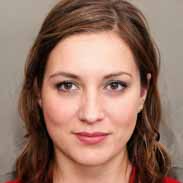Element Builder Gizmo Vocabulary – Flashcards
Unlock all answers in this set
Unlock answersquestion
Atom
answer
The basic unit of matter • An atom is the smallest particle of an element that still has all the properties of the element. • Atoms are made up of smaller particles called protons, neutrons, and electrons. The smaller electrons orbit around a central nucleus of protons and neutrons.
question
Atomic Number
answer
The number of protons in the nucleus of an atom • Elements are distinguished from one another by their atomic numbers. • For example, any atom with two protons is an atom of helium. • The symbol for the atomic number is Z. • In an element symbol, the atomic number is shown at lower left.
question
Electron
answer
A negatively charged particle that moves around the nucleus • The mass of an electron is less than one thousandth of the mass of a proton.
question
Electron dot diagram
answer
A diagram that shows the element symbol surrounded by dots representing valence electrons • For example, the electron dot diagram at right shows that neutral helium atoms have two valence electrons.
question
Elements
answer
A pure substance that cannot be broken down into simpler substances by ordinary chemical means • Elements are made of one type of atom • Atoms of different elements are distinguished by the number of protons in the nucleus. For example, all carbon atoms have 6 protons
question
Energy Level
answer
A particular region where electrons can orbit a nucleus
question
Ion
answer
An atom or molecule that has an electrical charge because it has gained or lost electrons • An atom with more protons than electrons is a positively charged ion, or cation • An atom with more electrons than protons is a negatively charged ion, or anion • In an element symbol, the electric charge is shown at upper right
question
Isotope
answer
One of several forms of the same element • All isotopes of a given element have the same number of protons, but differ in the number of neutrons • Most isotopes are radioactive. Usually only one or two stable isotopes exist for a given element
question
Mass Number
answer
The number of protons plus neutrons in the nucleus of an atom • For example, the mass number of helium is 4 (2 protons and 2 neutrons) • The symbol for the mass number is A • In an element symbol, the mass number is shown at upper left
question
Neutron
answer
A particle with no charge located in the nucleus of an atom • Neutrons have slightly more mass than protons • The number of neutrons is described by the neutron number, N • To find the number of neutrons, subtract the atomic number from the mass number
question
Nucleus
answer
The positively charged, dense center of an atom • The nucleus contains protons and neutrons
question
Periodic Table
answer
A chart that organizes the chemical elements based on their properties
question
Proton
answer
A positively charged particle located in the nucleus of an atom • Protons have slightly less mass than neutrons • The number of protons determines the element
question
Radioactive
answer
Capable of releasing radiation • In a radioactive atom, the nucleus can spontaneously decay and emit particles and/or light. These emissions are called radiation • The energy released by radioactive substances can be harnessed to produce electricity in a nuclear power plant. This energy also can be used to create a massive explosion in a nuclear bomb • If the emissions change the number of protons in the nucleus, the atom becomes a different element
question
Valence Electrons
answer
Electrons found in the outermost energy level of an atom
question
Protons and Neutrons
answer
_____ and _____ are found in the nucleus of an atom.
question
Positive charge
answer
Protons have a _____ _____ and a mass of 1 amu.
question
Neutral
answer
Neutrons are electrically _____ and have a mass of 1 amu.
question
Atomic Number
answer
The number of protons in the nucleus of an atom is the _____ _____.
question
Isotopes
answer
Atoms of the same element that have the same number of protons but different number of neutrons are called _____.
question
Mass Number
answer
The _____ _____ of an atom is the sum of the protons and neutrons in its nucleus.
question
Atomic Mass
answer
The _____ _____ of an element is the average mass of all the naturally occurring isotopes of an element.
question
Negative Charge
answer
Electrons have a _____ _____.
question
Electron Cloud
answer
Within the _____ _____, electrons are arranged in energy levels.
question
Four Forces
answer
• Electromagnetic • Strong • Weak • Gravity



